As a handyman, having the right tools and equipment is essential for DIY projects. One of the most common and versatile pieces of equipment is a drill press vise. It’s an invaluable tool that allows you to hold materials in place with great precision – enabling you to create quality results quickly and safely. In this comprehensive article, we’ll run through everything you need to know about using a drill press vise from tips on choosing one that best suits your needs, understanding how to use it properly and the benefits it can bring. So if you’re looking to up your DIY game, let’s dive in!
What are the Uses of a Drill Press Vise?
It typically consists of a columnar base with a rotating spindle that holds the chuck and cutting tools. The height of the column allows for the workpiece to be moved up or down so that it can be drilled accurately at various depths. The head of the drill press typically contains controls for speed and depth settings. Some models even feature digital readouts for precision drilling. In addition to straight-line drilling, certain models also have special capabilities like tapping, reaming, countersinking, and spot-facing. Drill presses are available in several sizes ranging from small hand-held versions to larger floor-mounted versions suitable for industrial use.
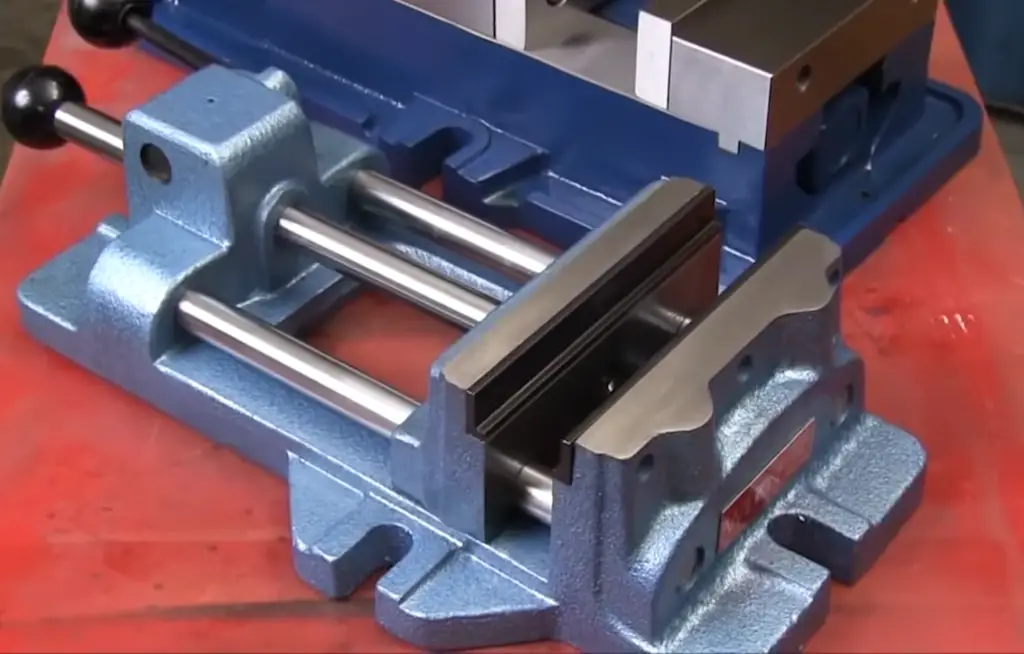
A drill press vise is a specialized tool used for making precise and accurate cuts into wood or metal. It consists of two jaws, one fixed jaw and one movable jaw, connected by a threaded rod. The movable jaw moves in relation to the fixed jaw when the handle on top of the vise is turned clockwise or counterclockwise. This allows the user to easily adjust the cutting depth of their material being worked on.
The drill press vise also features a stop that helps ensure accurate placement of pieces while drilling. The stop can be set to specific depths based on measurements taken from your workpiece, so that you can make consistent cuts every time. Additionally, some drill press vises offer optional attachments such as a table for working on larger pieces and a rack for holding bits.
The most common use for a drill press vise is to hold metal pieces in place while drilling holes in them. For example, when constructing projects such as birdhouses or furniture, it’s important to make sure that the holes are drilled accurately so that they align properly with each other. A drill press vise allows the user to precisely position their pieces before drilling into them, ensuring accuracy and a professional finish.
Another popular use for drill press vises is to hold wood in place while routing or shaping it. By securely clamping the wood, the user can be sure that their pieces will not move around while they are cutting into them. This is especially important when creating intricate details such as recessed panels or curved edges.
Finally, drilling press vises can also be used to secure material when cutting tiles or glass with a wet saw. The jaws of the vise help keep the tile from slipping so that clean and accurate cuts can be made without damaging other materials nearby. [1], [2], [3], [4]
Preparing Your Drill Press Vise
Prior to using your drill press vise, it is important to properly prepare it by making sure the jaws are aligned and that all moving parts are in good working order. To do this, inspect the vise for any signs of wear and tear such as damaged threads or rust. If present, these can be easily remedied by lubricating with oil or grease as necessary.
Next, check that the jaws of the vise are parallel with one another by placing a square on top of them. If they are not equal in size, use an adjustable wrench to turn the threaded rod until they match up. Finally, adjust the stop so that it aligns with your material’s desired cutting depth before beginning work.
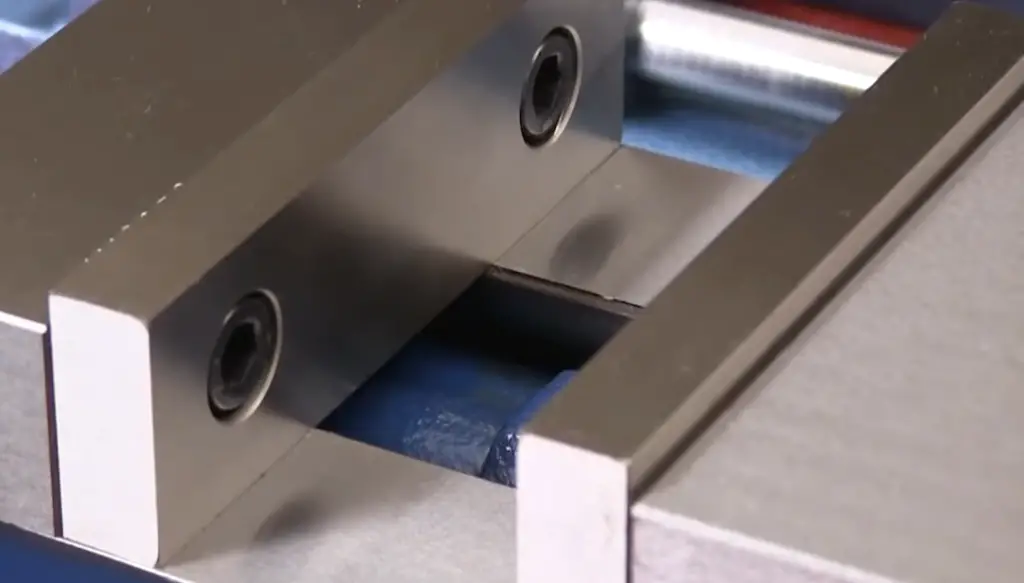
How to Use a Drill Press Vise Properly
Now that your drill press vise is ready to use, it’s important to understand the proper way to operate it. In this section we will discuss all the steps on how to use your drill press vise so that you can get the most out of it.
Mark the drill point spot
The first step when using your drill press vise is to mark the spot where you will be drilling. This can easily be done by placing a piece of tape on the material and marking it with a pencil or marker. Once you have found the desired location, place your material in the jaw of the vise and secure it tightly.
This is important as it will help to ensure that your drill bit is properly aligned with the marked location.
Open the jaws
Now that your material is secured in the vise, you can open the jaws to set the desired cutting depth. This can be done by turning the handle on top of the vise clockwise or counterclockwise depending on how deep you wish to cut. Make sure that you do not turn it too far, as doing so could damage your material.
Position the workplace
Once you have set the cutting depth, adjust your workspace accordingly. Be sure to ensure that the material is securely held in place and that the drill bit is properly aligned with the marked spot. This will help prevent any mistakes or misalignments when drilling.
It’s important to note that the drill bit should be as close as possible to the marked spot in order for it to properly cut into your material.
Close the vise jaws
Once the drill bit is in place and you have double checked that everything is aligned, you can close the jaws of the vise and begin drilling. This will help ensure that your material remains stable as it is being worked on and also prevent any accidental movement of the drill bit.
To close the vise jaws, simply turn the handle on top of the vise counterclockwise until it clicks into place.
Align the piece(detailed answer)
After closing the vise jaws, double check that the material is properly aligned with the drill bit. If it is not, use an adjustable wrench to make any necessary adjustments until it is in the correct position.
Not aligning the material properly can cause problems such as misaligned cuts or even worse, damage to your material.
Start drilling
Once you have verified that everything is in place and aligned correctly, you can start drilling. Start by slowly lowering the drill bit into the material until it reaches the desired cutting depth. After this, adjust your speed and pressure according to what type of material you are working on.
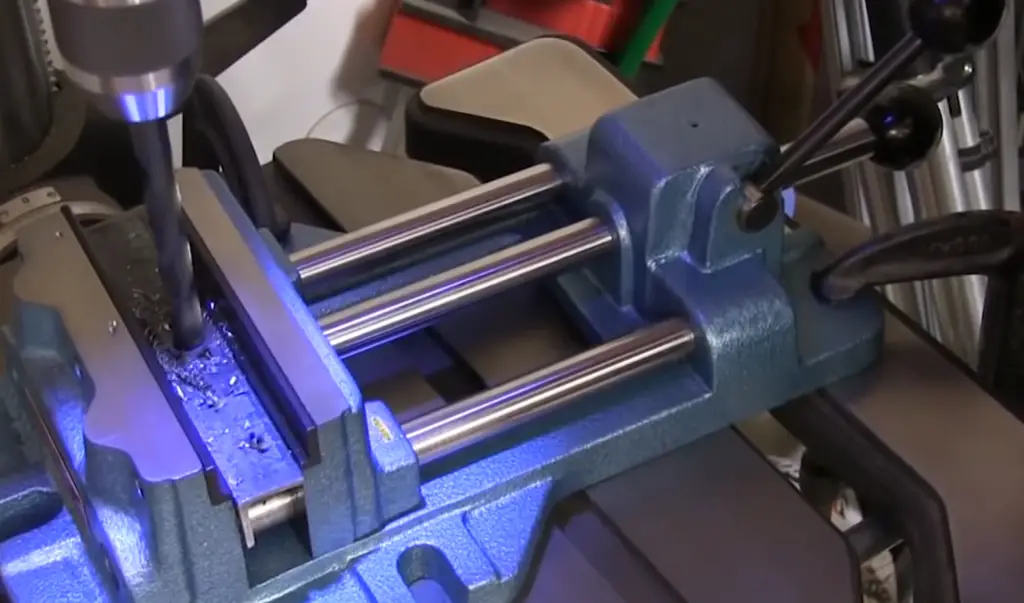
Finally, when all of your holes are drilled, raise the drill bit backup and open the jaws of the vise to remove your workpiece. With these steps, you can successfully use a drill press vise for any project! [1], [2], [3], [4]
Safety Tips When Using a Drill Press
Since drill presses are powerful tools, it is important to take safety precautions when using one. Therefore we decided to help you out and list some of the major safety tips you should always keep in mind when using a drill press.
Avoid wearing loose clothing
While using a drill press, it is important to make sure you are wearing clothing that fits tightly and it cannot get easily entangled in the machine. Loose clothing or jewelry can easily get caught in the moving parts of the drill press, resulting in serious injury.
Tying your long hair is also recommended to prevent it from getting tangled with the drill bit.
Always wear safety glasses
Safety glasses should always be worn when operating a drill press as they protect your eyes from metal chips and other debris flying out from drilling. It is also important to make sure you have proper lighting so that you are able to accurately see what you are doing at all times.
Securely hold workpieces
In order for accurate results when drilling, it is necessary to securely hold the workpiece in place. This can be done using a drill press vise or clamps, depending on the size and type of material you are working with.
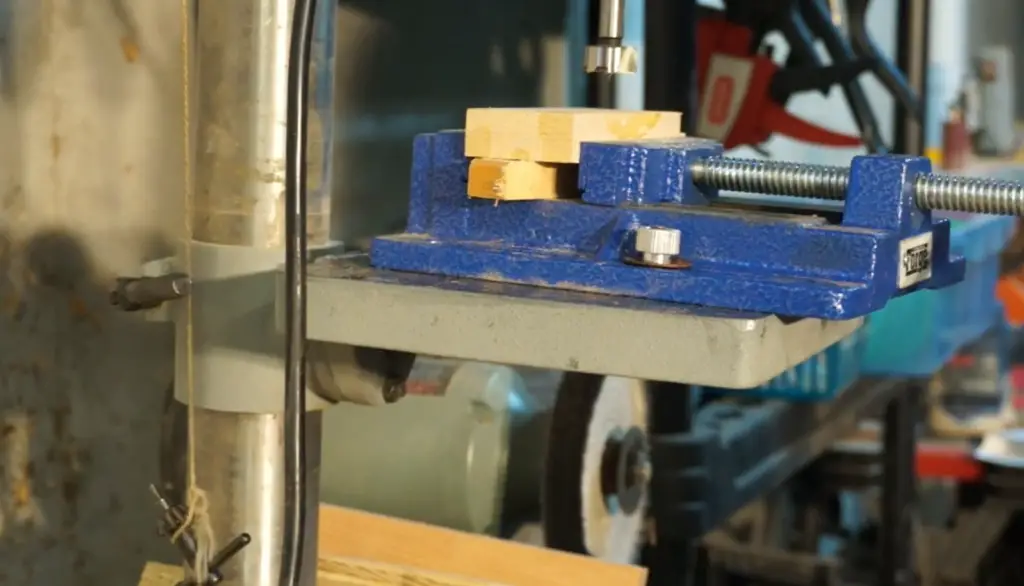
It is also important to ensure that your hands and fingers are not near the bit when it is in motion as this could cause serious injury.
Regularly inspect for worn parts
Before using a drill press, always make sure to inspect all components for signs of wear and tear. If any parts look damaged or worn out, they should be replaced immediately as they can lead to malfunctioning of the machine and even danger to the user.
Don’t drill with too much pressure
Drilling with too much pressure can cause the drill bit to break, resulting in potential injury. Therefore, it is important to always use the correct amount of pressure when drilling and make sure that you are not overworking or stressing out the drill bit.
Always remove the chips with a brush
After work is finished, always make sure to thoroughly remove all the chips and debris from the drill press with a brush. This helps prevent any buildup of material that could clog up the drill bit and potentially cause it to malfunction. Never use your hands! Chips are sharp and can easily injure you if handled with bare hands.
Don’t make adjustments before the machine is fully stopped
When making adjustments to the drill press, it is important to make sure that the machine has completely stopped before attempting any changes. This will help prevent any accidents and ensure that everything is working properly. This relates to both adjusting the piece or the settings of the drill press itself. [5]
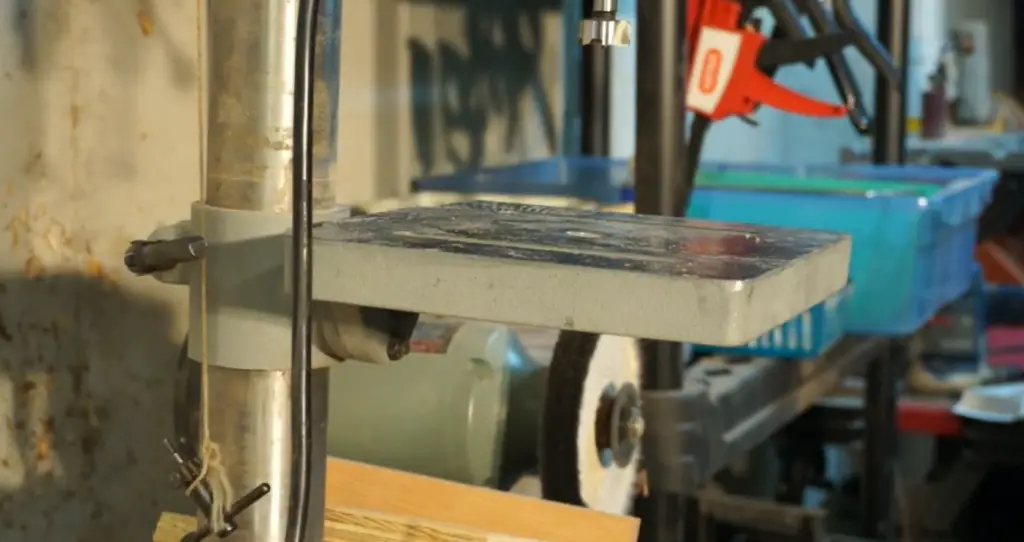
FAQ
Can I use a vise as a press?
Yes, you can use a vise as a press. To do so, you should first secure the item to be pressed into the jaws of the vise by tightening them in place with a wrench or other tool. Once the workpiece is secure, position the drill bit at an appropriate angle and begin pressing down on the handle of your drill press. As long as your vise is securely mounted on your workbench or work surface, it will provide enough resistance for you to make accurate and precise cuts with your drill press. Be sure to adjust the height of the bed appropriately depending on your specific project. Additionally, always wear safety glasses when using a drill press and make sure that all components are firmly secured before beginning any operations.
Should a drill press be bolted down?
Yes, it is always advisable to bolt down a drill press for safety reasons. When in use, the vibration from the can cause the machine to move and even tip over if not properly secured. Additionally, securing your machine will help with accuracy when drilling into materials as it reduces any movement of the machine during operation.
To bolt down your drill press safely, you will need to have access to its underside so that you can mount it on top of a stable base or workbench. You should be sure to check for level before mounting – an uneven surface may affect the accuracy of your work. Once mounted securely, you should also make sure that all bolts are checked regularly and tightened if necessary.
When bolting down your drill press, it is also important to remember that the bolts should not be too tight. Over-tightening can cause damage to the machine and cause it to move incorrectly when in use.
How do you use a vise on a drill press?
Using a vise on a drill press is relatively easy, but it does require some preparation to ensure that your workpiece is securely held in place during the drilling process. Before you begin, make sure to select the correct size of vise for your needs. The jaws should fit snugly around your workpiece without being too tight or loose – if they are too tight, the material may be damaged when clamping it into the vise.
You will also need to mark the drill point spots on your workpiece before clamping it into the vise. This will ensure that you drill in the exact place that is necessary for accuracy and to get a good final result.
Once you have secured your workpiece in the vise, tighten up both sides using an adjustable wrench until the piece is firmly seated and can’t move freely. Be careful not to over-tighten as this could damage both the vise and your workpiece.
How do you bolt down a drill press vise?
Most drill press vises come with pre-drilled mounting holes along the bottom and side faces. Before bolting down the vise, you’ll need to check the drill’s table to make sure it is level. To do this, use a machinist level or carpenter’s level to ensure that the top of the table is perfectly flat. Once you have confirmed that your work surface is level, you can begin to attach your vise securely.
The most common way to mount a vise onto a drill press is by using bolts and nuts or cap screws with washers.
Start by placing the vise onto the table, then use a drill and bit that are slightly smaller than the bolts’ thread size.
Pre-drill all of the holes, taking care not to drill too deep into the table surface.
Once you have pre-drilled all of your bolt holes, place a washer onto each one before inserting and tightening every bolt. As you tighten each one, make sure that they are tightened evenly so that there is no slippage or looseness when clamping down workpieces in your vise. Once all of your bolts have been securely fastened, you should be able to confidently attach and secure any type of material on your drill press with ease.
Why use a drill press vise?
A drill press vise can come in handy for a variety of projects. Due to its adjustable jaws, it’s great for holding small or oddly shaped objects steady during drilling operations. It provides more stability than hand-held tools and allows the user to make precise drill holes with ease. Additionally, using a drill press vise can speed up processes by providing an effective way to secure the workpiece without having to manually reposition your material.
Do you need a vise for a drill press?
Yes, a vise is necessary for a drill press. A vise holds the workpiece in place while the drill bit is used to make holes in the material. It also helps you line up and clamp multiple parts together so that they can be worked on at once. This ensures accuracy when drilling larger pieces or when working with long pieces of material. Additionally, a vise allows for more precise control over where and how deep you are drilling into your materials.
Useful Video: Shop Tip – Drill Press Vise Quick Release
Conclusion
Drill press vises are incredibly handy tools that can be used in a variety of different applications. They provide an extra measure of safety and accuracy when working with metal or wood, making them essential for any DIYer or professional. When properly set up, a drill press vise can save time and effort by securely holding materials in place as you work. With the right technique and some practice, a drill press vise will become an indispensable part of your toolbox!
In this article, we’ve discussed the basics of selecting a drill press vise, setting it up correctly and safely, as well as some tips for using it most efficiently. We hope that this guide has given you the knowledge to make an informed decision when purchasing a drill press vise, and also provides useful information on how to use one effectively.
Whether you’re a beginner or an experienced operator, it’s important to understand how to use a drill press vise correctly so that you can get the most out of your tool and avoid potential hazards. This guide has provided some helpful tips on how to install and use a drill press vise, but the best way to learn is by doing. So why not get out there and give it a try? You’ll be glad you did! Happy drilling!






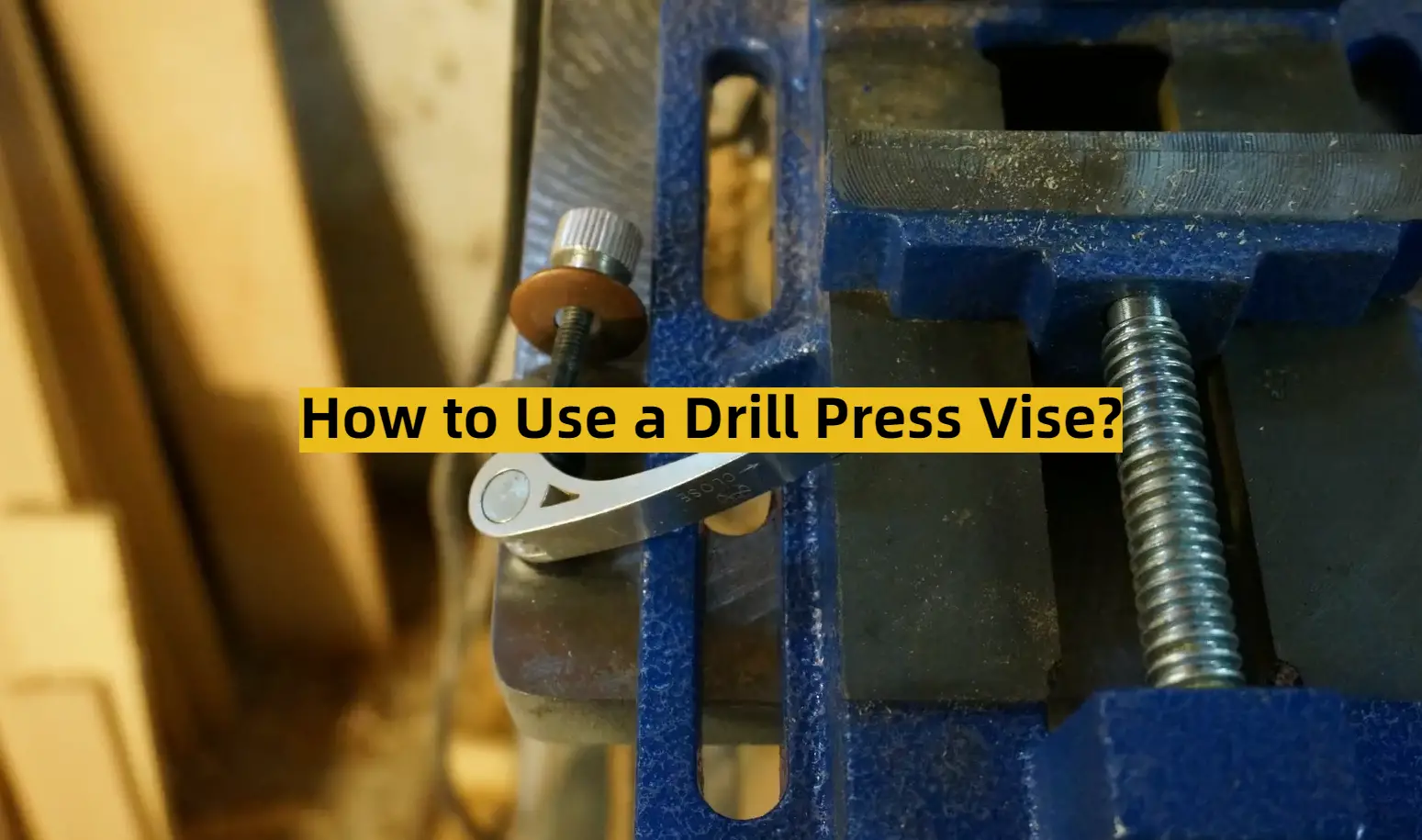




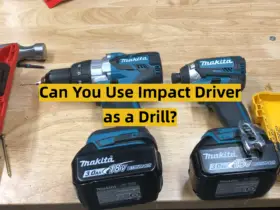
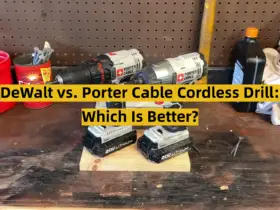
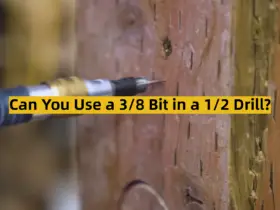
Leave a Reply